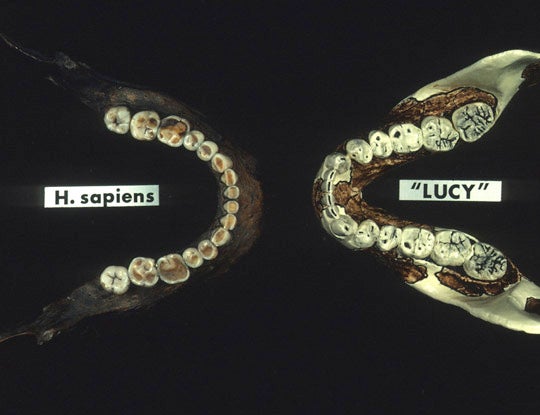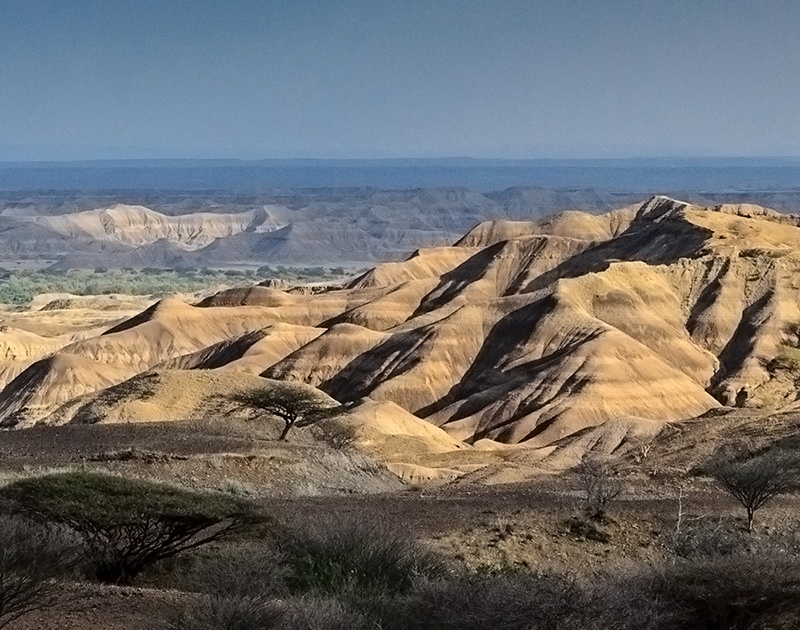Australopiths: It's a raw food life
 The hard candy in your mouth is taking forever to dissolve. You decide to bite down on it. Ouch! It turns out to be much harder than you thought. You think you may have cracked a tooth. How come we don't crack teeth more often? Fortunately, our teeth are fairly sturdy, and this is because we have thick enamel. Enamel is what makes the white, shiny cap on a tooth, and it is the hardest substance in the human body.
The hard candy in your mouth is taking forever to dissolve. You decide to bite down on it. Ouch! It turns out to be much harder than you thought. You think you may have cracked a tooth. How come we don't crack teeth more often? Fortunately, our teeth are fairly sturdy, and this is because we have thick enamel. Enamel is what makes the white, shiny cap on a tooth, and it is the hardest substance in the human body.
The amount of enamel that a tooth has is called enamel thickness. If you use a microscope to look at the enamel, you will see that the layers of enamel are braided together. These braids of enamel help keep the tooth from breaking apart.
Normally, we do not have to worry much about whether we have thick layers of enamel. If we crack a tooth, we can go to a dentist to get it fixed. If food is too hard to eat, we can always cook it.
However, this wasn't the case for our early ancestors. They did not have dentists and, if we go back far enough in human evolution, our early ancestors did not even know how to cook. Mostly, they had to rely on their thick enamel to crack and crunch through hard food. This was especially true for a group of our ancestors called the australopiths.
What big teeth you have!
The australopiths are a group of early hominins that lived 4.2 to 1.2 million years ago. During that approximately three-million-year time span, several species of australopiths evolved and went extinct throughout huge sections of the African continent. All australopiths had big back teeth made up of thick layers of enamel. A single back tooth could be as wide as a human adult’s thumbnail. A side effect of having such large back teeth is that the front teeth were very small and, in some cases, they looked like baby teeth.
 Why did they need such big back teeth? Scientists think that maybe the australopiths needed their big teeth to crack open and eat very dense foods, like nuts and tubers, which are similar to uncooked potatoes. However, it is likely that the australopiths had a diverse diet. Cut-marks found on bones that are 3.4 million years old suggest that australopiths may have also eaten raw meat.
Why did they need such big back teeth? Scientists think that maybe the australopiths needed their big teeth to crack open and eat very dense foods, like nuts and tubers, which are similar to uncooked potatoes. However, it is likely that the australopiths had a diverse diet. Cut-marks found on bones that are 3.4 million years old suggest that australopiths may have also eaten raw meat.









